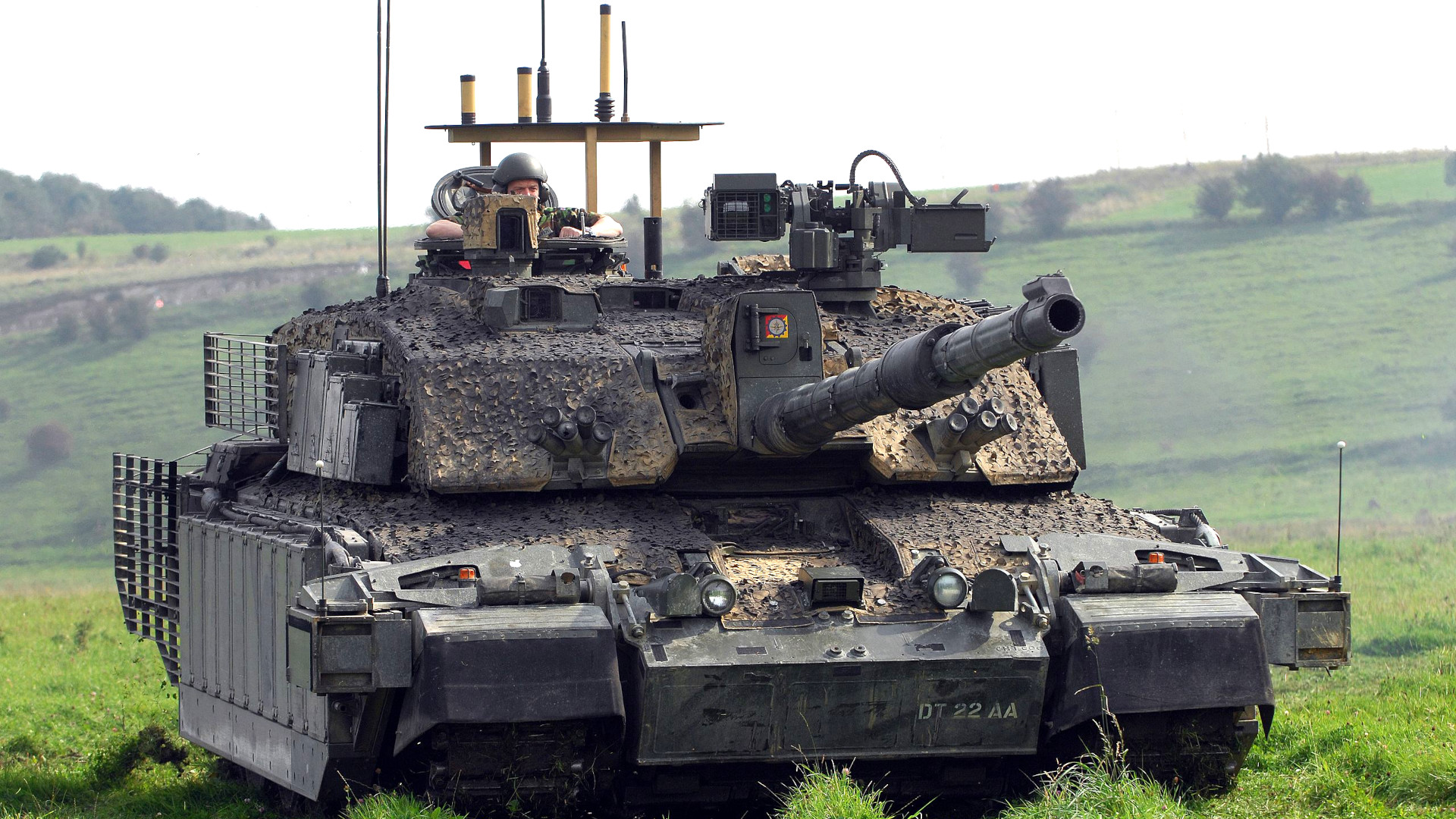Britain’s top defense official revealed today that his country is planning to send FV432 Mk 3 Bulldog tracked armored personnel carriers to the Ukrainian armed forces. This is part of a larger military aid package that will include Challenger 2 main battle tanks and AS-90 155mm self-propelled howitzers, along with other vehicles, weapon systems, and other materiel. This new British assistance comes as more and more of Ukraine’s international partners are working to transfer more modern Western tanks and other heavy armored vehicles, or are looking to do so, as fears grow about Russian military preparations to launch new offensives in the Spring.
Ben Wallace, the United Kingdom’s Secretary of State for Defense, provided new details about the latest British military assistance package for Ukraine to members of his country’s Parliament earlier today. Authorities in the United Kingdom had confirmed over the weekend that Challenger 2s and AS90s would be part of the deal, but did not provide further details.
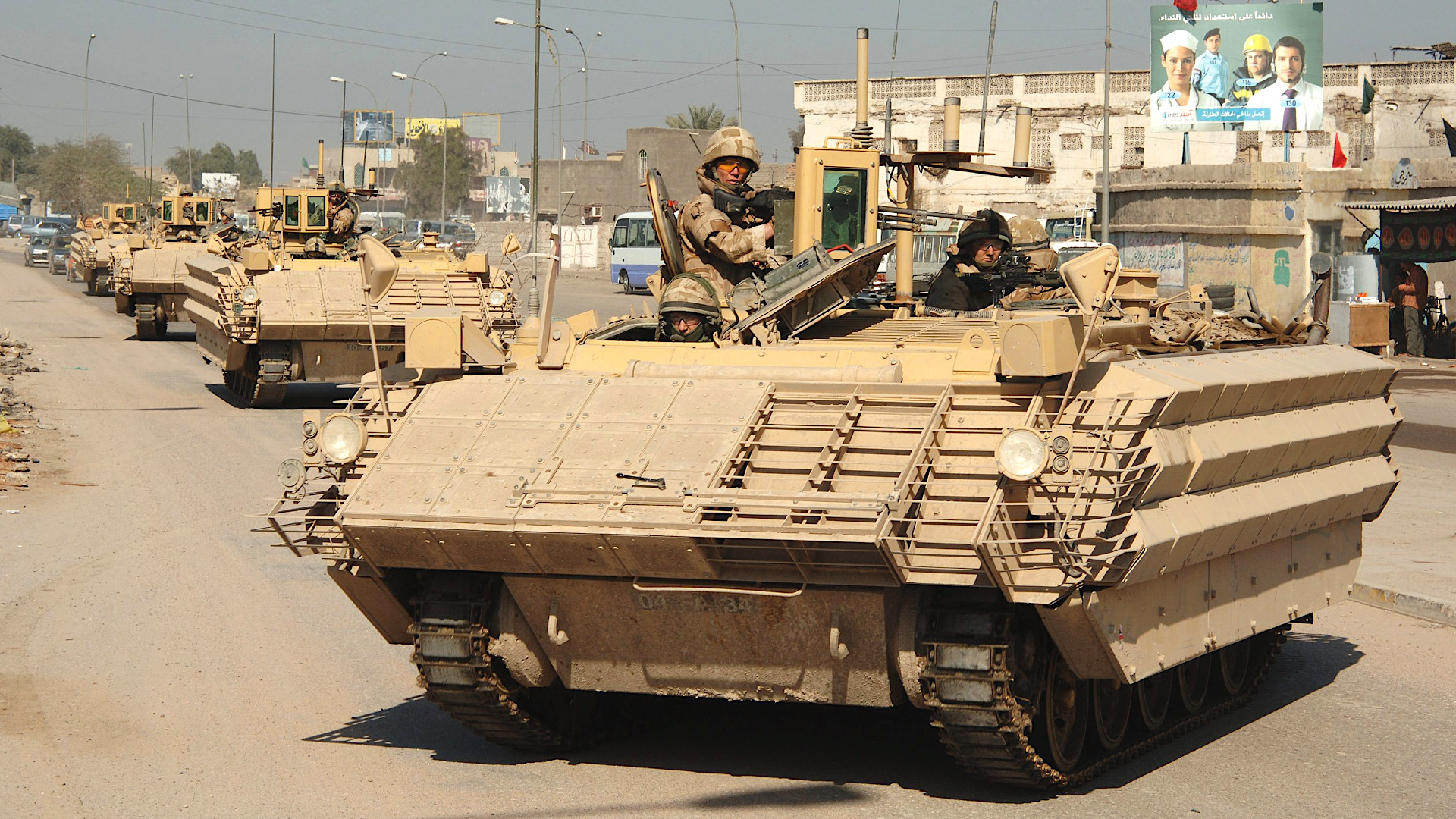
“In 2023 there is no loss of momentum from the international community [in its support for Ukraine], quite the opposite. President Putin believed the West would get tired, bored, and fragment,” Wallace said before Parliament. “Ukraine is continuing to fight and, far from fragmenting, the West is accelerating its efforts.”
Still, “Putin apparently remains bullish, and… we now would expect a trend back towards a Russian offensive – no matter how much loss of life accompanies it,” he added. “Today I can announce the most significant package of combat power to date to accelerate Ukrainian success.”
Per Defense Secretary Wallace’s statement today, the entire batch of aid will include the following:
- Around 14 Challenger 2 tanks together with armored recovery and repair vehicles (equivalent to one British Army armored squadron).
- A battery of eight AS-90s self-propelled howitzers, with plans already to send two additional batteries worth of these mobile guns in the near future (Ukraine is expected to receive 30 in total).
- Hundreds of other armored vehicles, including an unspecified number of FV432 Mk 3 Bulldogs.
- A maneuver support package “that includes minefield breaching and bridging capabilities.”
- Dozens of uncrewed aerial systems, specifically “to support Ukrainian artillery.”
- 100,000 unspecified artillery rounds.
- Hundreds of “sophisticated missiles,” which will include 227mm Guided Multiple Launch System (GMLRS) rockets that can be fired from M142 High Mobility Artillery Rocket Systems (HIMARS) and variants and derivatives of the M270 Multiple Launch Rocket System (MLRS), Starstreak surface-to-air missiles, and examples of an unknown type of “medium range air defense missile.”
- A support package with spares for tanks and infantry fighting vehicles already in Ukrainian service.
The substantial armored component of this aid package is notable. The United Kingdom, as well as the United States, Germany, and other countries, have long resisted calls from Ukraine for more modern tanks, in particular. The ability of Ukrainian forces to operate and maintain Western tanks and other heavy armored vehicles, as well as concerns that sending them could provoke serious and potentially direct retaliation from Moscow, have long been cited as the reasons.
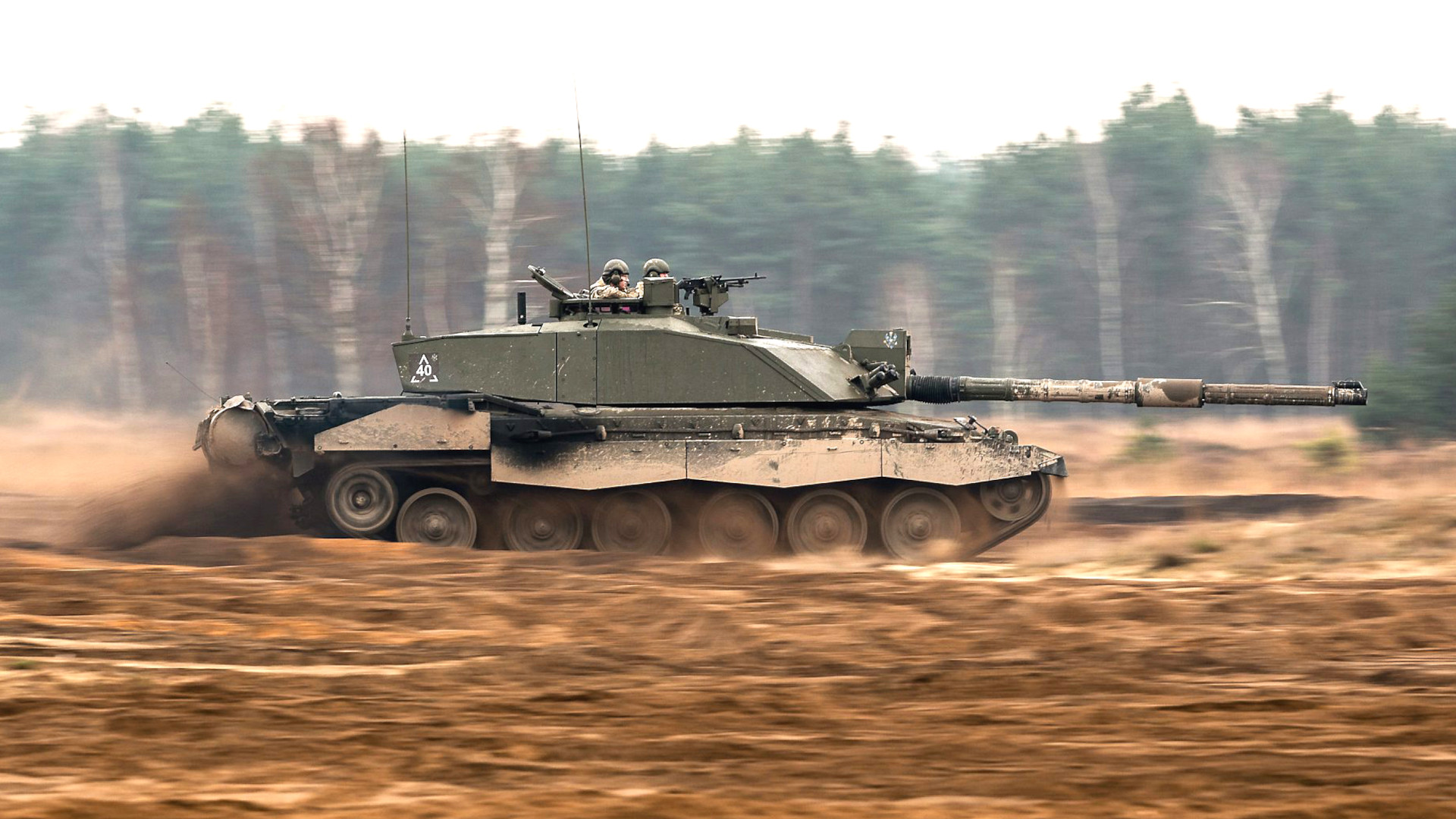
However, in recent weeks, the British government’s policies in this regard, as well as those of a number of other nations, have been steadily evolving. Wallace also specifically mentioned recent decisions by French and U.S. authorities to respectively send AMX-10RC heavy armored cars and M2A2-ODS Bradley Infantry Fighting Vehicles to Ukraine in his comments today. However, at least so far, authorities in the United Kingdom are the first to formally announce they will be delivering Western tanks to the Ukrainian armed forces without any caveats.
Challenger 2 main battle tanks
The Challenger 2s that Ukrainian forces are set to receive are the most significant component of this new aid package, but it’s not immediately clear how they will be configured. At present, the British Army has around 227 Challenger 2s, in total, 148 of which it plans to upgrade to a Challenger 3 standard that you can read more about here. The plan has long been to divest the remaining 79 tanks, which is very likely the pool that the ones for Ukraine will come from.
Development of the tank, which is a substantially reworked derivative of the preceding Challenger 1, began in the late 1980s and the first examples entered British Army service in 1998. It is armed with a 120mm rifled main gun, which can fire various kinds of ammunition. This includes armor-piercing fin-stabilized discarding, sabot (APFSDS) rounds, each containing a smaller caliber high-speed dart of sorts made of a dense metal designed to physically punch through armor, and a high-explosive squash-head (HESH) types that are designed to send a shockwave through an enemy vehicle’s armor rather than busting through it. It also has a co-axial 7.62x51mm electrically-powered, chain-driven machine gun and a more typical gas-operated machine gun in that same caliber on the top of the turret.

Challenger 2 is notably very heavy, even by the standards of Western main battle tanks, weighing close to 74 tons in its basic configuration and has a maximum speed on the road of around 37 miles per hour. In the Theater Entry Standard (TES) configuration, its weight grows to nearly 83 tons and its top speed drops down to just under 35 miles per hour.
Tanks with the TES kit have add-on armor modules, including explosive reactive armor (ERA) arrays and slat-armor screens to help defeat various tiers of infantry anti-tank weapons. It also has a 7.62x51mm machine gun-armed remote weapon station on top of the turret, an electronic warfare jammer primarily intended to disrupt radio-triggered improvised explosive devices (IED), and improved sensors for better general situational awareness, among other things. TES is sometimes referred to as the “Megatron” kit, after the nickname given to a Challenger 2 that the British Army uses to test various upgrade packages.
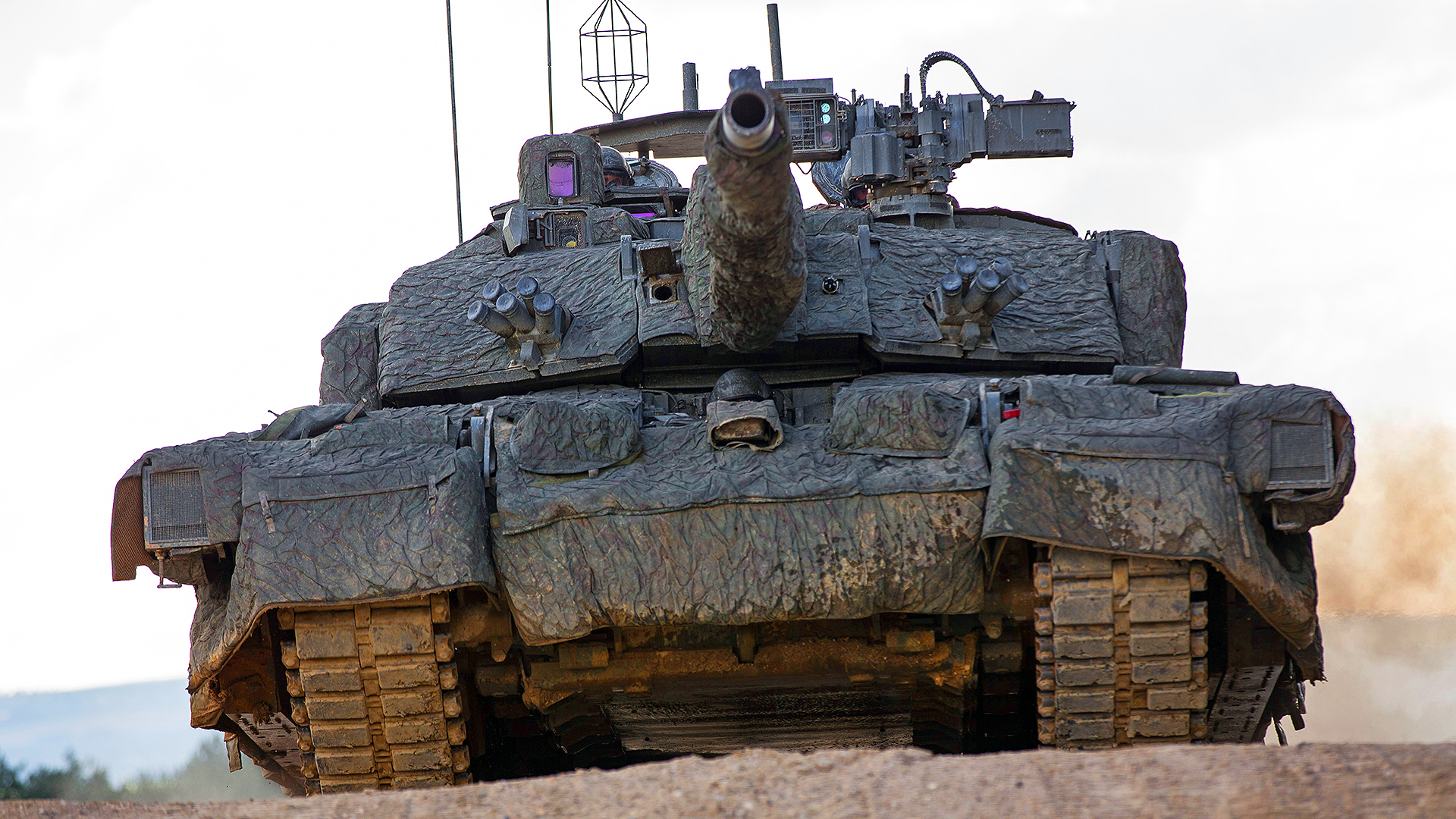
The British Army has also previously experimented with dedicated urban warfare configurations for the Challenger 2, called Streetfighter and Streetfighter II, which have included various novel features or mockups thereof. Streetfighter II notably had a box on top meant to simulate a possible add-on launch system for Brimstone missiles.

Whether the Challenger 2 tanks will come along with TES kits, or components thereof, or any other add-on armor or upgrades, is unclear. It’s not clear how many full TES kits the British Army might have on hand, but there have been reports that the number is relatively low.
FV432 Mk 3 Bulldog armored personnel carriers
Unlike with the Challenger 2s, U.K. Defense Secretary Wallace specifically mentioned the Bulldog configuration of the FV432. The FV432 is part of the FV430 family, the initial production of which for the British Army began in 1962, and these vehicles are roughly analogous to the American M113 and its subvariants. The core vehicle weighs just under 17 tons and has a top speed on improved roads of just under 32 and a half miles per hour. The armored personnel carrier version has a basic armament of a single 7.62x51mm machine gun on top.
The Bulldog, also known as the FV432 Mk 3, is a substantial upgrade over the original design that was developed in response to British Army combat experiences in Afghanistan and Iraq in the early 2000s. This variant, the first of which entered service in 2006, has a new engine and drive train improvements that give it increased speed and better cross-country mobility, as well as an air-conditioning system (something perhaps more critical for operations in desert locales than Ukraine at present).

Bulldog was also designed to be fitted with add-on armor and additional survivability features, including additional armor protection for the gunner on top, ERA and slat armor packages on the sides of the hull, and an IED jammer.
At least 500 FV432s were upgraded to the Bulldog standard and the type remains in British service despite plans to have retired the entire fleet years ago.
AS-90 self-propelled howitzers
In addition to the new plans to help bolster the Ukrainian military’s tank and other heavy armored combat vehicle fleets, the British government is now looking to add to its artillery capabilities with the AS-90. These are fully tracked self-propelled 155mm howitzers, which carry their main weapon inside an enclosed armored turret. They can also be equipped with a 7.62x51mm machine gun on top of the turret for self-defense.

First introduced into British Army service in the 1990s, the current models of the AS-90 have a computerized fire control system and power-assisted loading equipment. This all increases the speed with which the howitzer can be aimed and fired, or realigned from one target to another. The AS-90 has a sustained fire rate of two rounds per minute, but can manage six rounds a minute for three minutes or fire off a three-round burst in 10 seconds, if required, according to the British Army website.
The stated maximum effective range of the AS-90’s main gun is just over 15 miles with standard ammunition types. The howitzer can strike targets even further away using rocket-assisted projectiles.
Of out of an original fleet of 179, the British Army currently has around 89 AS-90s still in service and is actively exploring replacement options. It’s not clear how many more may still be in storage after having been retired over the years that could now be readily sent to Ukraine.
What British tanks and other heavy armor means for Ukraine
The new British aid package full of heavily armored vehicles, especially the Challenger 2s, is a significant development for Ukraine. Even if the Challenger 2 tanks do not come along with major add-ons, such as TES kits, they still represent a much more heavily armored, modern design with a more capable main gun compared to the Soviet and Soviet-derived types currently in Ukrainian service. The tanks also feature capable thermal and night-vision optics that could give them additional advantages on battlefields in Ukraine, where Russian forces have shown themselves to limited capabilities to fight after the sun goes down.
The Bulldogs will offer Ukrainian forces an additional fleet of up-armored personnel carriers. They are not as heavily armed and armored, or as advanced sensor-wise, as something like the American M2A2-ODS Bradleys or German Marder 1s that Ukraine is set to receive. However, they could still provide useful protection at least against shrapnel from artillery shells and small arms fire when used in various roles, including as infantry carriers or armored ambulances.
Ukraine’s military has already received hundreds of similar M113s, and derivatives of that design, and has been using them extensively despite many Western militaries having deemed them obsolete.
The value of the AS-90s almost goes without saying. Artillery is currently playing a huge part in the fighting in Ukraine on both sides, to the point that Ukrainian and Russian forces have reportedly been running low on shells and scrambling to find sources around the world to keep up with demand. Though not the longest-range howitzer Ukraine has received from its Western partners, the AS-90s, plus the ammunition the British government is planning to send, can only help make sure Ukraine’s artillery units can continue providing vital and highly-mobile fire support and otherwise keep harassing Russian forces.
At the same time, there are questions about how significant an impact the Challenger 2s, specifically, might have due to the relatively small number currently pledged for Ukraine and the maintenance and logistics requirements necessary to keep them running. It is worth noting that U.K. Defense Secretary Wallace said that the aid package would include some number of armored recovery vehicles. These could be critical for retrieving Challengers that get damaged or otherwise immobilized so they can hopefully be returned to service.
Though the exact type of recovery vehicle was not specified, the British Army uses the Challenger Armoured Repair and Recovery Vehicle (CRARRV) in this role. The CRARRV is based around a heavily modified Challenger 1 hull and current versions use the same engine and drive train as the Challenger 2.

These same general concerns apply to varying degrees to the AS-90s and the Bulldogs. The FV432 even in the Bulldog configuration is a simpler vehicle overall compared to the Challenger 2, though. In addition, Ukrainian forces have already been operating a number of Polish AHS Krab 155mm self-propelled howitzers, which use the same turret as the AS-90, but on a different chassis.
The CRARRV, if Ukraine is indeed getting some, is powerful enough to recover other heavy armored vehicles like AS-90s, too.

No matter what, just training crews to operate the tanks and other armored vehicles will take some amount of time.
“The U.K. will begin training the Ukrainian Armed Forces to use the tanks and [the AS-90] guns in the coming days, as part of wider U.K. efforts which have seen thousands of Ukrainian troops trained in the U.K. over the last six months,” according to a press release the office of Prime Minister Sunak issued on January 14.
Beyond the tanks and other materiel in the military aid package that the British government announced today, it could have important political impacts, too. Authorities in the United Kingdom have now firmly broken the taboo around the very idea of sending Western tanks to Ukraine. There has been talk for weeks now about how this decision could put pressure on the German government, in particular, to approve subsequent transfers of Leopard 2 tanks from various countries to the Ukrainian armed forces. German Vice Chancellor Robert Habeck has already come out in favor of signing off on those third-party details, even if Germany’s own policies in this regard remain unchanged.
“After discussion with the United States and our European allies it is hoped that the example set by the French and us will allow those countries holding Leopard tanks to donate as well,” Defense Secretary Wallace told Parliament today. “I know there are a number of countries wanting to do the same. No one is going it alone, as I have said.”
It is worth noting that the Leopard 2, as well as the U.S. M1 Abrams, another Western tank type that has been discussed as a possibility for Ukraine, uses a 120mm smoothbore gun that fires different ammunition from the Challenger 2’s main gun. This could prompt additional logistics concerns, though Ukrainian forces have so far proven at least somewhat adept at managing various donated weapon systems that use a plethora of different ammunition types.
The British government’s announcement could just open the possibility that more Challenger 2s, as well as other heavier armored vehicles, could be transferred to Ukrainian forces if they demonstrate that they can operate and maintain the initial batches to an adequate degree. Defense Secretary Wallace’s statement today says that more AS-90s are being prepared for the Ukrainian military now.
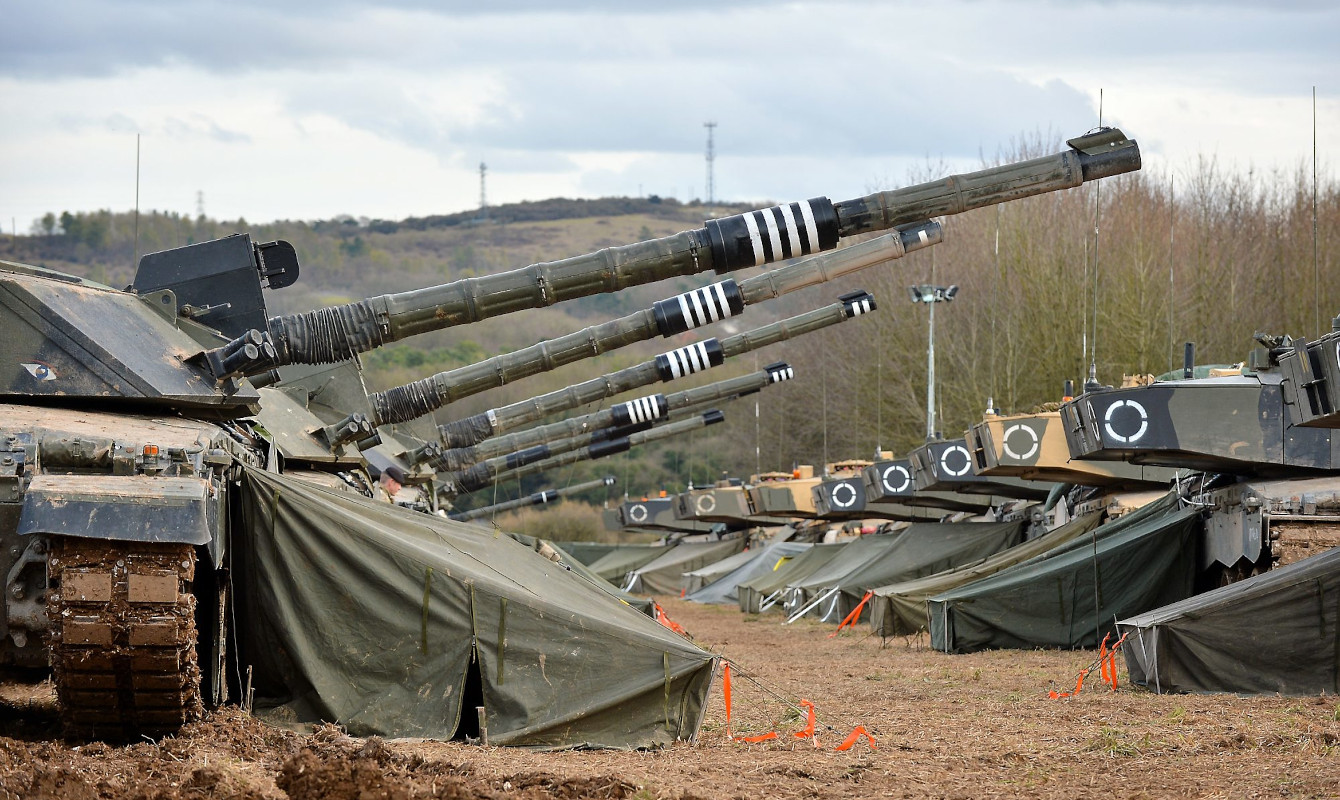
Deliveries that come sooner rather than later could be very important depending on how successful the Russian military is or isn’t in assembling forces and otherwise preparing for offensives in the spring.
“Today’s package will help accelerate the conclusion of Putin’s occupation and all its brutality and ensure that in 2023 and beyond if necessary, Ukraine maintains its momentum, supported by an international community that is determined more than ever that Putin’s illegal and unprovoked invasion will fail,” Defense Secretary Wallace declared today.
If nothing else, what is clear is that authorities in the United Kingdom feel that the door is now wide open for sending tanks and other heavy armored vehicles to further bolster Ukraine’s capabilities after nearly a year of fighting against invading Russian forces.
Contact the author: joe@thedrive.com
